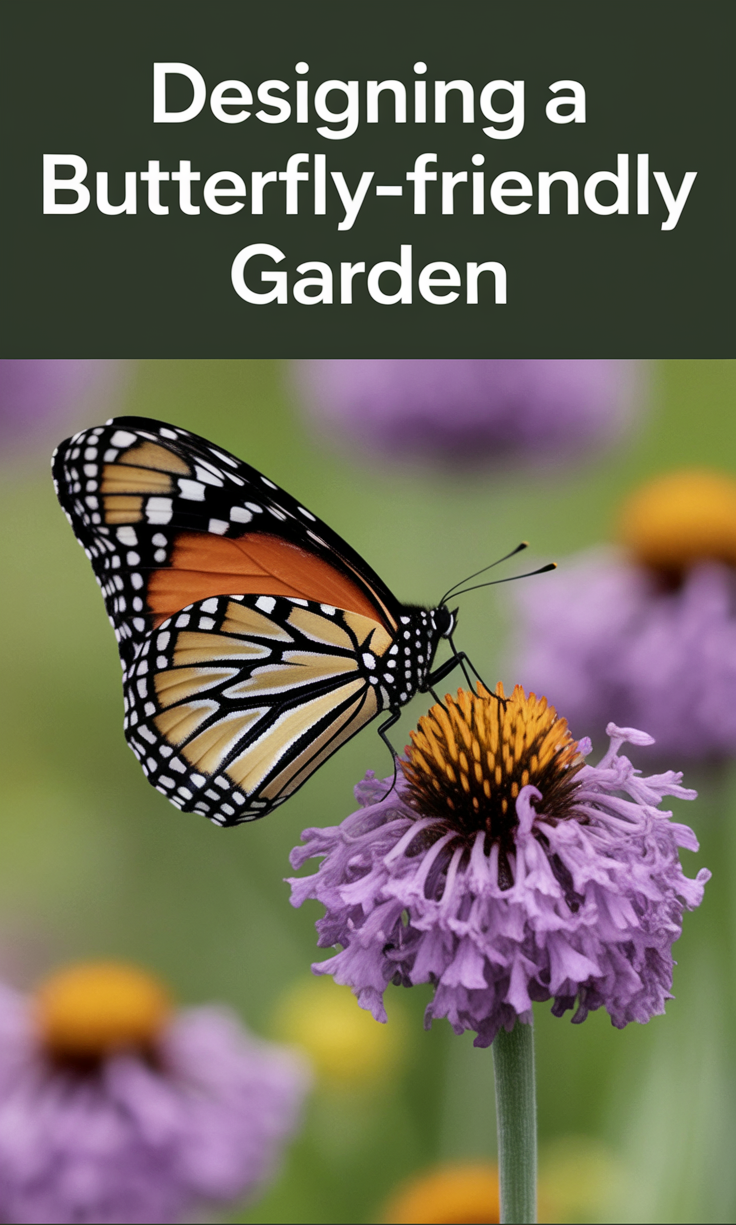Designing a Butterfly-Friendly Garden in 2025: A Complete How-To

Establishing a butterfly-friendly garden in 2025 is not only a fad but also a great method to help local biodiversity and liven your yard naturally. Over the previous two decades, butterfly populations all throughout North America have dropped by around eighty percent. These energetic pollinators are really important for our ecosystems, hence your garden may turn into a refuge for them.
This tutorial will teach you exactly how to create a butterfly-friendly garden fit for the 2025 environmental constraints. If you really want to make a difference, we will go over the several kinds of plants to grow, how to arrange your garden, and what to avoid.
This article is for whom?
- Homeowners wishing to enhance their outside area
- Gardeners who care about the environment
- Parents creating surroundings for outdoor learning
- Landscapers looking for ideas for sustainable design
Let’s look at how to create a butterfly paradise out of your green area.
Why Butterflies Matter for 2025
Butterflies are more than simply beautiful wings flitting among blossoms. Essential pollers, ecological markers, and a major component of food chains, they are also Their presence points to a suitable habitat.
The Crisis of the Butterfly
Many butterfly species have lately been pushed to the brink by habitat destruction, climate change, and pesticide use. For instance, portions of the United States have categorized monarch butterflies as endangered.
More vital than ever is creating safe, friendly surroundings.
Quick fact:
Pollinators like butterflies help over 75% of flowering plants reproduce.
How thus might your backyard be of use? Allow us to delve in.

What Do Butterflies Need to flourish?
Creating a butterfly garden requires transcending floral design. You have to establish an entire ecology.
Plants with Rich Nectar
Adult butterflies eat nectar, hence they require a constant supply from spring through fall. The ideal is native flora.

Host Caterpillars’ Host Plants
Every butterfly species deposits her eggs on particular host plants. For instance, monarchs just eat milkweed.
Shelter and Hydration
For hydration, create sunny areas, wind protection, and shallow water sources—such as stone puddles or damp sand.
List of Essentials: Checklist
- Six plus hours of sun exposure every day
- Groupings of nectar-producing plants
- Organize host plants for local butterflies
- Un touched soil and natural mulch
- Ste clear of insecticides
Top Butterfly Plants for 2025
Organized by plant kind, these are some of the best performing plants you might include to your butterfly garden.

Top Perennial
| Plant Name | Bloom Time | Attracts Species |
|---|---|---|
| Echinacea | Summer | Swallowtails, Monarchs |
| Milkweed | Summer/Fall | Monarchs |
| Bee Balm | Summer | Fritillaries, Skippers |
| Black-eyed Susan | Late Summer | Painted Ladies |
Simple Annual Notes
- Xinnia
- Heaven
- Lantana
- Marigound
Native Plants from US Regions
- California poppies from the West Coast, Yarrow
- Midwest: Joe-pye weed and purple conefower
- Southeast: Blightly star, coreopsis
Wish to draw more nearby species. Start with plants from your ZIP code. Make use of this native plant locate utility.
Layout Design for Your Butterfly Garden
Establishing a functional garden is about intent rather than symmetry.
Get Ready for Ongoing Bloom
Combining plants that bloom at different periods guarantees always a nectar supply.
Form Layered Zones
Ground covers in front; plant tall perennials in the rear, mid-height in the center. Butterflies like bunches above individual blossoms.

Leverage Sun Traps and Pathways
Butterflies enjoy the sun. Add heat-absorbing garden art or stone walk-throughs. Steer clear of putting everything under shadow.
Advice on Mini Layout:
- Group 3+ of every type of plant
- Put a shallow dish with water and pebbles here
- Put in a bench to see your garden in use
Common Errors to Steer Clear Of
Unintentionally harming butterflies can even come from well-meaning gardeners.
Chemical Employment
Steer clear of pesticides and herbicides—even organic ones can be detrimental to caterpillars.
Oversaw Too Much Grass
Lawns are butterflies in a desert. Convert some grass to flowery beds.
Non-Native or Invasive Species
Certain popular ornamentals, such butterfly bushes in some states, can cause more damage than benefit.
Before you buy, review the invasive plant list for your state.
Your Comprehensive Butterfly Garden Checklist, Step-by- Step
Here’s how you create your butterfly oasis:
- List native butterflies in your area.
- Select nectar plants for every season.
- Put host plants for caterpillars here.
- Remove areas of grass for flower beds.
- Steer clear of all poisons including herbicides.
- Share shallow water and sunny areas.
- Lay natural ground coverings or mulch.
- Track visits in a garden diary.
Ready to begin modest? Even few containers on a balcony will help!

What fresh ideas in butterfly gardening in 2025?
Eco-friendly gardening technologies are exploding. Here is what is trending:
Intelligent Watering Systems
Now, sensors change watering plans depending on humidity—perfect for pollinator gardens.
Corridors of Pollinators
To make “green highways” for butterflies, communities are connecting gardens. Search for neighborhood projects in your hometown.
Certified Sites of Pollution Habitat
Would you like it formally registered? Verify your garden using organizations like National Wildlife Federation or the Xerces Society. Ultimately, it’s time for change.
Let’s review the main conclusions:
- In 2025, butterflies will be absolutely vital for our ecosystems.
- A smartly designed garden fosters biodiversity as well as butterflies.
- Key are native flora, no chemicals, and layered design.
- Small metropolitan areas can also become into butterfly paradise.
Which butterflies find your garden most frequently? Comments below include your stories or pictures. Let’s motivate one another to make 2025 greener.
